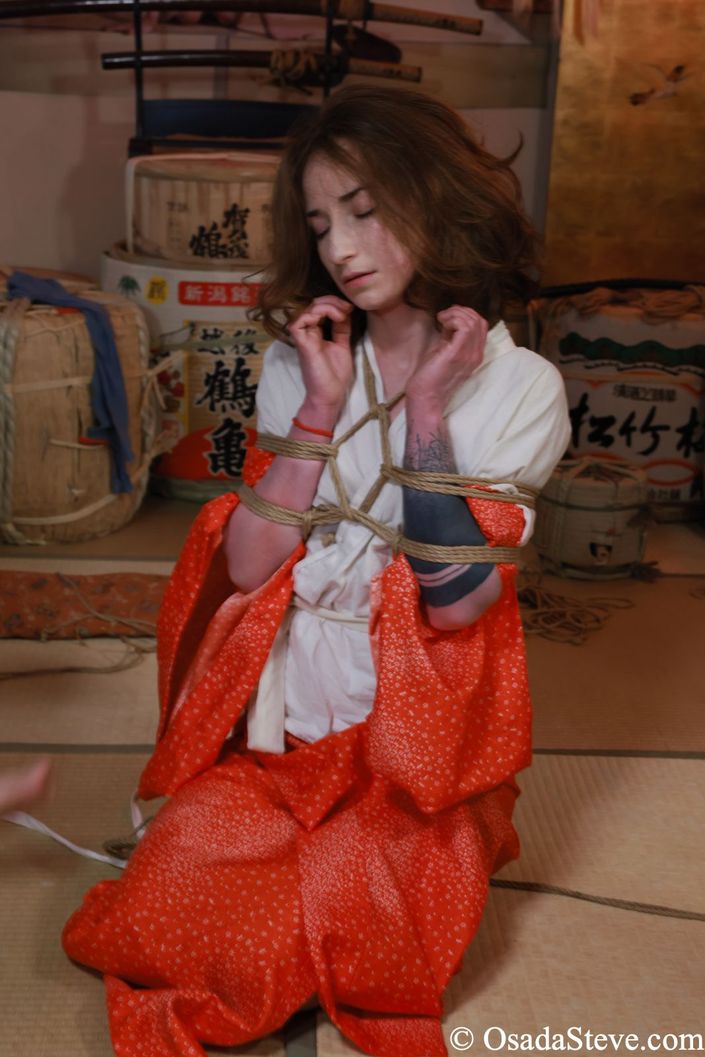On the Trail of the Elusive
Taijutsu Triangle
In this workshop we are being treated to a masterclass in kobudo (古武道) techniques.
Kobudo are old school (prior to 1886) martial arts before they were turned into sports. The main difference being that in the old days you fought to the death while today you fight for points.
Many of the old-school techniques are living on in modern jujutsu, aikido, and other Japanese fighting disciplines.
If you know how to break something you also know how to protect something from falling apart. In this workshop we focus on the ethical way to use our knowledge in taijutsu (体術) to put the precious body of our rope partner (受け手, ukete) into shapes that are reducing the risk of injury while tying.
With ukete (受け手) standing straight, her bent arm facing to the side or to the front, pulling her forearm while she offers resistance will be difficult. This is a typical "strongest man wins" situation.
For bakushi (縛師, "rigger") to gain the upper hand he needs to bring ukete's arm into a diagonal (angled) position in relation to the body.
Alternatively, bakushi could position himself diagonally to ukete.
The main principle is to find triangles and figure out the pivot points.
For example, if both shoulders are part of a triangle the third corner point (the wrists) is the one that can by moved. The two shoulder points are basically locked and immovable within the triangle.
Watch the video clips to see how it works in action.
The power of locked joints
In an arm stretched sideways you will have the wrist, elbow, and shoulder joints. Take the thumb facing upwards as the base point. By slowly rotating the palm clockwise or anticlockwise the shoulders can be manipulated in such a way that ukete (受け手) will lose balance and either fall forward or backward.
The power of moving your body
Properly positioning yourself in relation to ukete can be a complete game changer. Be prepared to reposition yourself to change the power dynamics to your advantage.
Likewise, moving your body while remaining stationary can be a powerful tool.
Exercises
To get the hang of it you would want to exercise. There are several basic elements: 1) Becoming adept at developing a vision for triangles. 2) Discovering the angles and corners within triangles that can be moved. 3) Avoiding strength. Generally speaking, if you need strength to do a technique you are doing it wrong. 4) Communication! Keep your sensors out to detect the subtle signals emanating from ukete.
Watch the video clips to see how it works in action.

.

.

.

.

.

.
The Curriculum
Three hours of content
First Section
Available in
days
days
after you enroll
Chef's Recommendatioms
Perambulate through the vast treasure trove of high-quality workshops and structured school system courses.
Check your inbox to confirm your subscription




